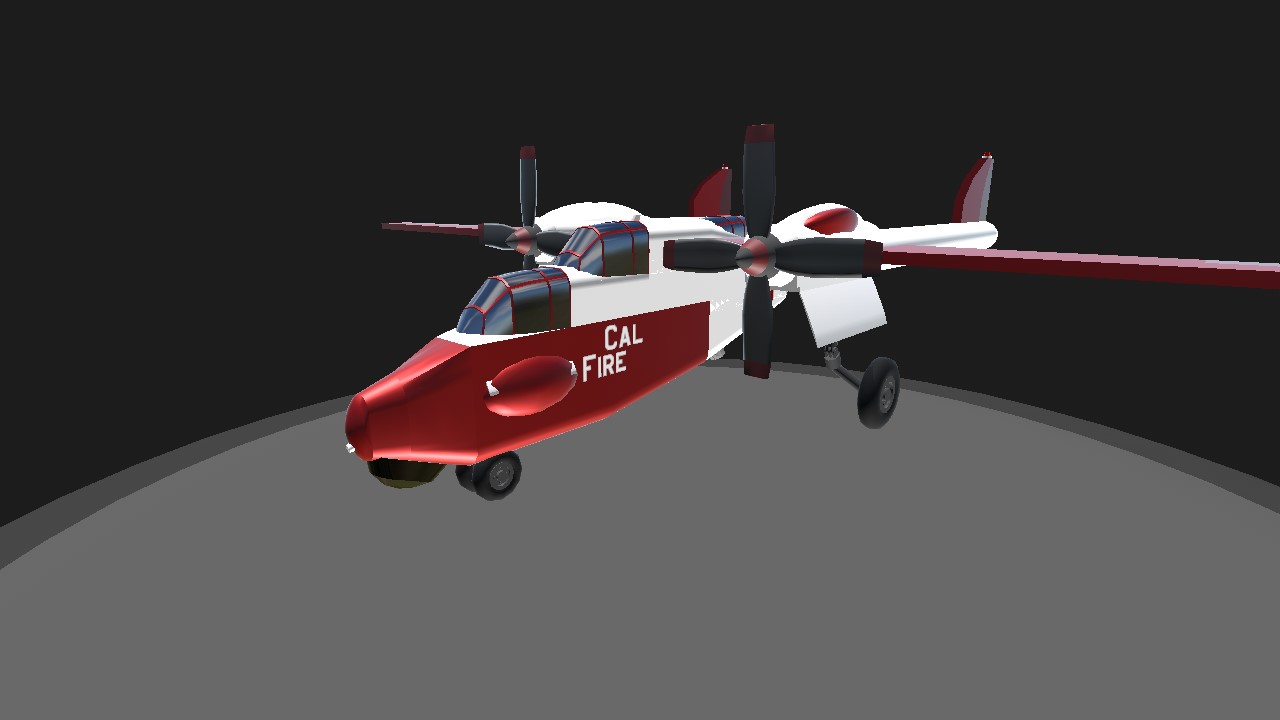Please read the background, it's cool
AG 1: Fire retardant
AG 2: Landing light
Flares: Water
VTOL: Flaps
The Snyder-Van FF-7 Forcaster (play on Lancaster) fire fighting aircraft was developed in the late 70s as a response to outdated fire fighting aircraft and deviating fires. The first prototype was completed in 1979, production started in September of 1982. A joint project by The Oregon company Van's Aircraft and the California company Snyder AeroSystems, parts were produced in both states and brought to a assembly plant in Northern California where the aircraft would be completed. It can be fitted with both water and fire retardant dropping equipment. Fitted with a heat detection array under the nose, similar to those on heat seaking missiles. On high risk days a flight of 4 would be scrambled to fly over fire risk areas. Using their heat detection arrays, the aircraft would cover large sections, detecting or "forecasting" if there were developing fires, hence it's name. If a fire is detected and confirmed they would move out of their v formation and transition to a rectangular pattern over the fire, one behind the other. One would break formation and drop it's payload and return to the pattern. Then the next would and so on. The planes were soon nicknamed blaze bombers due to the military bomber like formations. Initially the aircraft were exclusively made for aerial fire fighting in California and Oregon, however due to the effectiveness the crews are occasionally stationed in other states.
Crew of 4
2 pilots (top cockpit)
1 Engineer (heat seaking array operator, bottom cockpit)
1 spotter/radio operator (back windows)
Specifications
General Characteristics
- Created On Android
- Wingspan 44.8ft (13.7m)
- Length 25.6ft (7.8m)
- Height 9.9ft (3.0m)
- Empty Weight 5,145lbs (2,333kg)
- Loaded Weight 7,473lbs (3,390kg)
Performance
- Horse Power/Weight Ratio 0.267
- Wing Loading 49.8lbs/ft2 (243.2kg/m2)
- Wing Area 150.0ft2 (13.9m2)
- Drag Points 3090
Parts
- Number of Parts 81
- Control Surfaces 12
- Performance Cost 394






